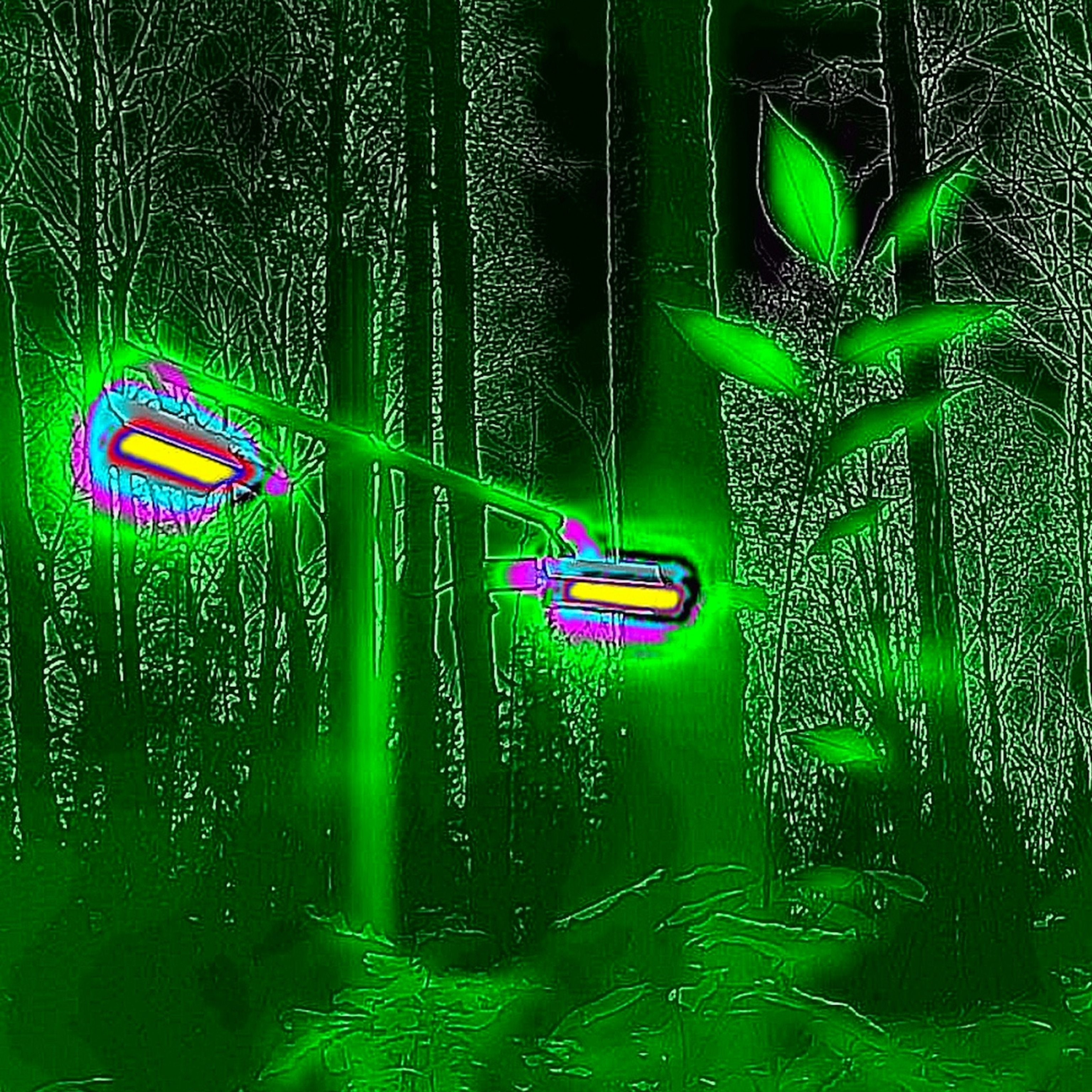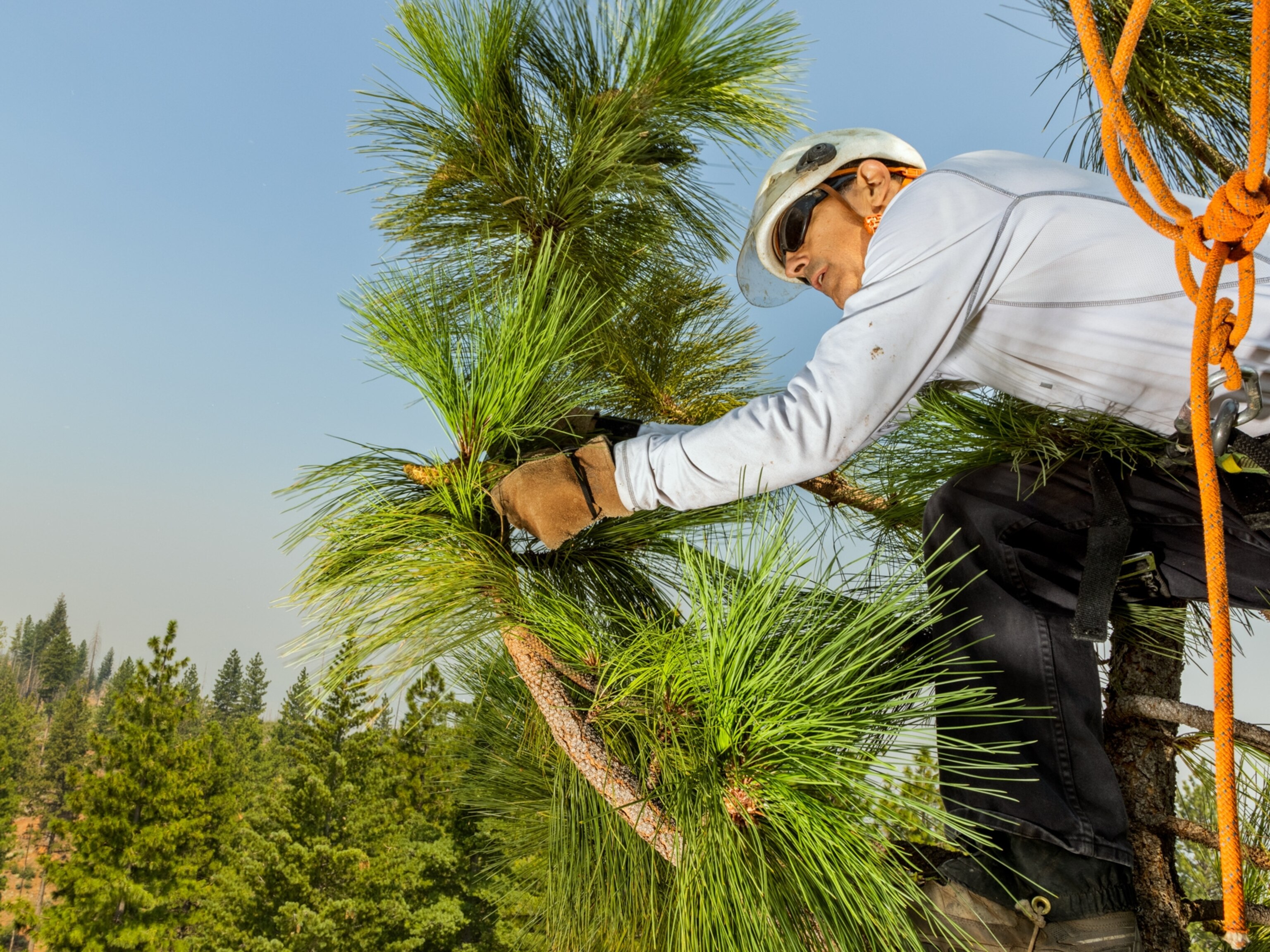
These Farmers Slash and Burn Forests—But in a Good Way
Farmers in northern Thailand cut small patches of forest, grow crops, then let the trees regrow. The result: good harvests and happy woods.
Hin Lad Nai, Thailand — In the dark, unfurnished room where Chaiprasert Phokha sits, in a house on stilts, a sunbeam falls through the pane-less window and fills a glass jar with amber light. Phokha leans his wiry body into the light and pops the vacuum-sealed lid off the jar. With an encouraging nod, he passes it to me. The sweet aroma of rainforest blossoms fills my nostrils.
“We’ve harvested 3,000 jars (1,500 lbs) of wild honey this year,” Phokha says. “All of it came from wild bees living in the forest around our village.”

The village is Hin Lad Nai, an indigenous Karen settlement in the Chiang Rai province of northern Thailand, and Phokha is the head of it. The wooded hills around it look like a wilderness, as lush as the national park we drove through on the way north.
Yet this forest has been slashed and burned for centuries.
The villagers here practice “shifting cultivation,” an age-old and worldwide practice of clearing patches of forest to plant crops for a few seasons, then letting the woods return. It’s also called “swidden agriculture.” But “slash-and-burn” is the pejorative term that captures how many foresters and development experts, both in Thailand and around the world, perceive this tradition.
The honey in my hand, though, tells a different story. It’s evidence of a forest with rich soils and abundant wildlife—including that key indicator of a healthy ecosystem, bees.
“Hin Lad Nai forest has remained remarkably healthy, despite centuries of shifting cultivation,” says Prasert Trakansuphakon, a Thai social scientist and Karen himself who has worked with the village for years. “And, at a time when numbers of honeybees are declining worldwide, local wild bees are thriving.”

A Misunderstood Tradition
In a 1957 report, the Food and Agriculture Organization of the United Nations (FAO) declared shifting cultivation a “backward type of agricultural practice” and “a backward stage of culture in general.” Ever since, the predominant view among experts has been that the practice devastates forests and biodiversity. More recently it has been charged with contributing to climate change.
The criticism is to some extent based on confusion with an entirely different kind of slashing-and-burning, says Thailand-based agricultural anthropologist Malcolm Cairns. When farmers, ranchers, or corporations destroy intact forests and permanently transform them into pastures or plantations, it’s clearly not good for the forests or the environment in general. But “that’s very different,” Cairns says, “from the sustainable, rotational shifting cultivation practices of indigenous peoples.”
Those practices, which are found on every continent, are extremely varied. But they follow a common pattern. First, most of the trees and shrubs are cut down in a relatively small patch of forest, typically around one hectare, where they are left to dry. In a few days, the withered vegetation is burned to put nutrients into to the soil in preparation for planting crops.
Over millennia, forests like Hin Lad Nai have been influenced, and likely formed, by shifting cultivation.Malcolm Cairns, agricultural anthropologist
This practice makes the use of artificial fertilizers unnecessary. What’s more, weeds and pests are destroyed by the fire, eliminating the need for herbicides and pesticides during the short period of crop cultivation.
After one or two growing seasons, the field is fallowed, or set aside to rest. Eventually the forest returns, and the cycle is repeated.
Hin Lad Nai’s fields have been part of such a cycle for at least 400 years, sustaining both the villagers and the forest with its diverse wildlife. Even endangered tigers are seen there, Phoka says.

Bad for Climate or Good?
The controversy around shifting cultivation has recently been heating up because of a global campaign aimed at slowing climate change by keeping carbon locked up in forests. Advocates of Reduced Emissions from Deforestation and Degradation, or REDD, as the United Nations campaign is called, tend to see all kinds of slash-and-burn agriculture as a major contributor to greenhouse gas (GHG) emissions.
When it comes to permanent land conversion programs for industrial agriculture, they’re surely right. Last year in Indonesia, for instance, fires set to clear the land for oil palm and pulp and paper plantations produced an acrid haze that enveloped Southeast Asia, and a surge in greenhouse gas emissions.
But a multi-year study of Hin Lad Nai and neighboring Karen villages in northern Thailand found that the area where shifting cultivation is practiced absorbs significantly more carbon than it releases each year. Burning trees do add carbon to the atmosphere, of course—but in a given year only around 10 percent of the land around Hin Lad Nai is burned and planted. The rest lies fallow for six to 10 years, soaking up carbon in growing trees and soil.
"Soils formed under shifting cultivation have more organic matter, and therefore more carbon, than most permanent agricultural fields or tree plantations,” Cairns says. “Consequently, carbon storage under swidden-fallow systems is greater both above and below the ground.”
“Over millennia, forests like Hin Lad Nai have been influenced, and likely formed, by shifting cultivation. The REDD program is now trying to ‘protect’ the forests from the very thing that has made them what they are.”

It’s Resilient and Adaptive, Too
Far from aggravating climate change, shifting cultivation could help indigenous peoples and the rest of humankind adapt to it. “The shift to a Green Economy must include shifting cultivation,” says Miguel Pinedo-Vasquez of Columbia University’s Earth Institute Center for Environmental Sustainability.
Swidden-fallow systems, he argues, maintain a mosaic of fields, fallows, and forests, that is heterogeneous and therefore resilient to climate change. When managed properly—it’s essential, for instance, to resist the pressure to farm the fallows too soon—such systems preserve local biodiversity, even as they enable villagers to harvest a broad range of vegetables, herbs, and fruits from the fields and wild medicines and edible plants from the forests.
And also wild honey. Before leaving Hin Lad Nai, I buy a few jars of amber rainforest goodness to share with family and friends, imagining a day when “Swidden Honey,” with its rich floral flavor, becomes as coveted in certain circles as shade-grown coffee.
Maybe the Karen could get a marketing boost from a seal of approval bestowed by some enlightened international organization—maybe it could even be the FAO. According to the FAO’s Yon Fernandez de Larrinoa, the organization is now reconsidering whether shifting cultivation is really as backward as it used to think.
Follow Gleb Raygorodetsky on Twitter and Instagram
You May Also Like
Go Further
Animals
- Orangutan seen using plants to heal wound for first timeOrangutan seen using plants to heal wound for first time
- What La Palma's 'lava tubes' tell us about life on other planetsWhat La Palma's 'lava tubes' tell us about life on other planets
- This fungus turns cicadas into zombies who procreate—then dieThis fungus turns cicadas into zombies who procreate—then die
- How can we protect grizzlies from their biggest threat—trains?How can we protect grizzlies from their biggest threat—trains?
Environment
- What La Palma's 'lava tubes' tell us about life on other planetsWhat La Palma's 'lava tubes' tell us about life on other planets
- How fungi form ‘fairy rings’ and inspire superstitionsHow fungi form ‘fairy rings’ and inspire superstitions
- Your favorite foods may not taste the same in the future. Here's why.Your favorite foods may not taste the same in the future. Here's why.
- Are the Great Lakes the key to solving America’s emissions conundrum?Are the Great Lakes the key to solving America’s emissions conundrum?
- The world’s historic sites face climate change. Can Petra lead the way?The world’s historic sites face climate change. Can Petra lead the way?
History & Culture
- Meet the ruthless king who unified the Kingdom of Hawai'iMeet the ruthless king who unified the Kingdom of Hawai'i
- Hawaii's Lei Day is about so much more than flowersHawaii's Lei Day is about so much more than flowers
- When treasure hunters find artifacts, who gets to keep them?When treasure hunters find artifacts, who gets to keep them?
Science
- Why ovaries are so crucial to women’s health and longevityWhy ovaries are so crucial to women’s health and longevity
- Orangutan seen using plants to heal wound for first timeOrangutan seen using plants to heal wound for first time
Travel
- Why this unlikely UK destination should be on your radarWhy this unlikely UK destination should be on your radar
- A slow journey around the islands of southern VietnamA slow journey around the islands of southern Vietnam
- Is it possible to climb Mount Everest responsibly?Is it possible to climb Mount Everest responsibly?
- 5 of Uganda’s most magnificent national parks
- Paid Content
5 of Uganda’s most magnificent national parks







